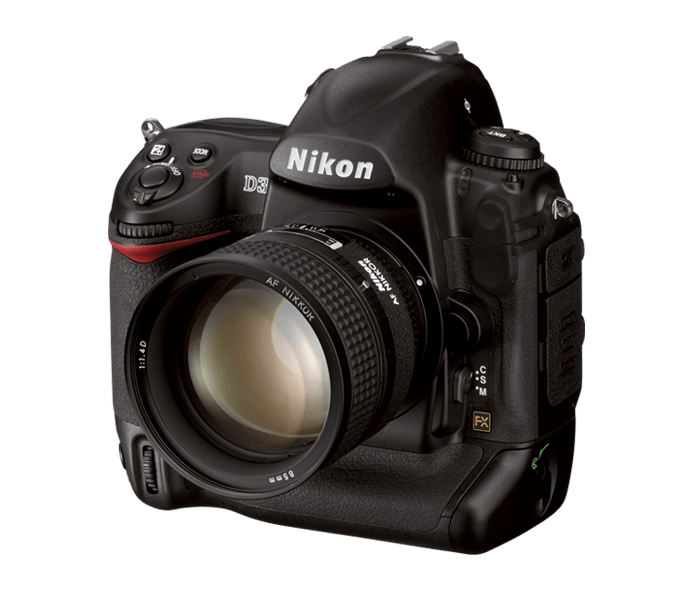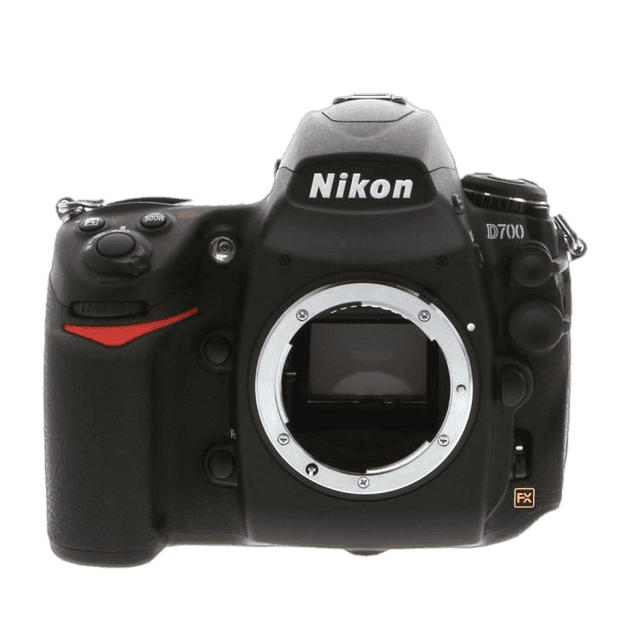Nikon D3 vs D700 Comparison
Nikon D3

Nikon D700

The Nikon D3 comes out on top with a score of 58/100, while the Nikon D700 trails behind at 53/100. Both cameras are DSLRs released in 2007 and 2008, respectively. They share common features, but the D3 outperforms the D700 in certain aspects.
The D3 is the larger and heavier camera, measuring 160 x 157 x 88mm and weighing 1300g. This size and weight make it more robust and durable. However, the D700 has its advantages, as it is lighter and more compact, measuring 147 x 123 x 77mm and weighing 1074g, making it more portable and easier to handle.
The D3’s higher score reflects its superior performance, but the D700’s lower price and compact size are worth considering for those prioritizing portability and budget. Each camera has its strengths, and the choice ultimately depends on individual preferences and needs.
Nikon D3 vs D700 Overview and Optics
The Nikon D3 outperforms the Nikon D700 in optics with a score of 56/100 compared to the D700’s 54/100. Both cameras share several specifications, including 12.1 megapixels, a CMOS sensor type, Expeed processor, full-frame sensor size, Nikon F FX lens mount, and the absence of image stabilization.
The D3’s advantage lies in its higher shooting speed of 11 frames per second (fps) compared to the D700’s 8 fps. This faster shooting speed enables the D3 to capture fast-moving subjects more effectively, making it a better choice for action and sports photography. Additionally, the D3 has a marginally higher DXOMARK sensor score of 81, compared to the D700’s 80. This indicates that the D3 may produce slightly better image quality under certain conditions.
On the other hand, the D700’s primary advantage is its lower price point, making it a more affordable option for photographers on a budget. However, this lower cost comes at the expense of the higher shooting speed found in the D3.
Considering these factors, the Nikon D3 is the better choice for photographers who prioritize shooting speed and slightly better image quality. Its higher score reflects its superior performance in these areas. Conversely, the Nikon D700 may still be a suitable option for those seeking a more budget-friendly full-frame camera, as long as they are willing to sacrifice some shooting speed. Ultimately, the choice between the two cameras will depend on the individual photographer’s needs and budget constraints.
Nikon D3 vs D700 Video Performance
In comparing the Nikon D3 and Nikon D700, it is important to note that neither of these cameras possess video capabilities. While some may see this as a drawback, it does not necessarily make one camera superior to the other. Both cameras have their strengths in other areas, and the lack of video functionality does not influence their overall quality as photography tools.
Nikon D3 vs D700 Features and Benefits
The Nikon D3 and the Nikon D700 both have a feature score of 54/100. Despite having the same score, there are differences in their features that set them apart.
Both cameras share common specifications, such as a 3-inch screen size and a screen resolution of 922,000 dots. Neither camera has a touchscreen, flip screen, GPS, or Bluetooth. However, the Nikon D700 has Wi-Fi, while the Nikon D3 does not.
The Nikon D700’s Wi-Fi capability is a significant advantage, as it allows for easier transfer of photos and remote control of the camera through a smartphone or tablet. This feature makes it more convenient for photographers who want to share their work quickly or control the camera settings without physically touching it.
On the other hand, the Nikon D3 does not have any features that make it better than the Nikon D700. Both cameras have the same screen size, screen resolution, and lack of touchscreen, flip screen, GPS, and Bluetooth. The only difference between the two cameras is the Wi-Fi capability, which the D700 possesses.
Based on these points, the Nikon D700 proves to be a more suitable choice for those who value convenience and connectivity. The Wi-Fi feature sets it apart from the Nikon D3, making the D700 a better option for photographers who want to share their work or control their camera remotely. While both cameras have the same feature score, the D700’s Wi-Fi capability gives it the edge over the D3.
Nikon D3 vs D700 Storage and Battery
The Nikon D3 outperforms the Nikon D700 in storage and battery, scoring 87/100 compared to the D700’s 43/100. Both cameras share similarities in storage, as they accept Compact Flash memory cards and lack USB charging capabilities.
The D3 surpasses the D700 with its dual memory card slots (Type I or II), providing more storage space and flexibility. In addition, the D3 boasts an impressive 4300-shot battery life, utilizing the EN-EL4a battery type. This significantly surpasses the D700’s 1000-shot battery life and EN-EL3e battery type.
While the D700 does not have any distinct advantages over the D3 in this category, it still offers a single memory card slot (Type I) and a decent battery life for casual photographers.
Considering the substantial differences in storage and battery capabilities, the Nikon D3 stands as a superior option for those prioritizing these features. The Nikon D700 remains a viable choice for casual photography but falls short in comparison to the D3’s performance.
Nikon D3 vs D700 – Our Verdict
Are you still undecided about which camera is right for you? Have a look at these popular comparisons that feature the Nikon D3 or the Nikon D700:

